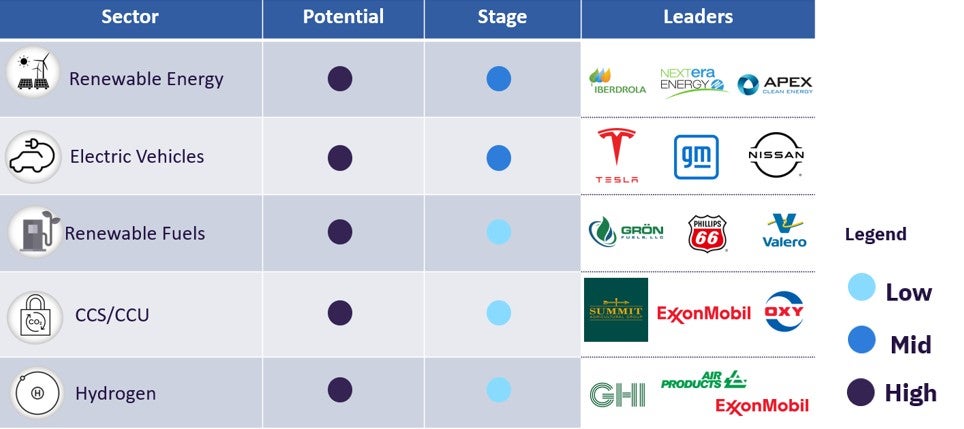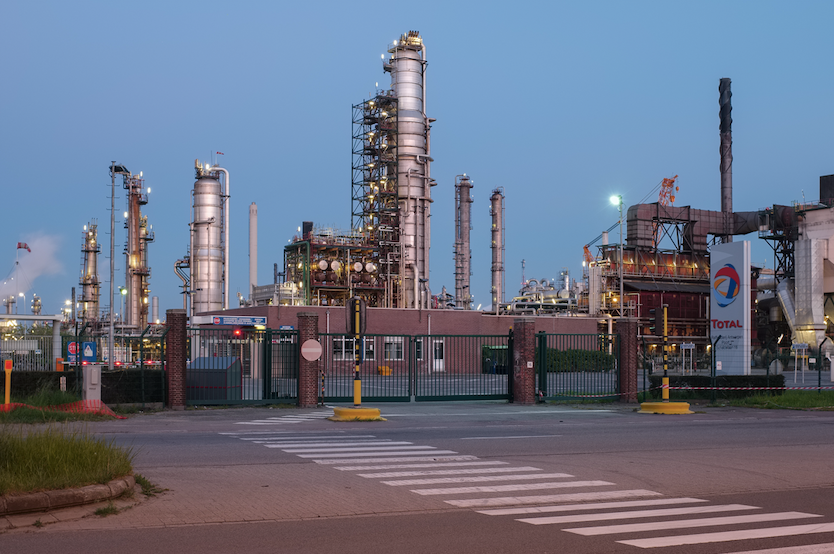- The energy transition in North America is gaining steam due to both the global momentum behind the sector and the Biden administration’s support, including recent laws like the Infrastructure Investment and Jobs Act and the Inflation Reduction Act.
- In the power sector, coal will take a back seat as renewables come online in larger numbers – especially solar PV technology. Gas generation will continue as a reliable baseload source.
- Burgeoning sectors like clean hydrogen, carbon capture, and renewable fuels are seeing a growing number of project announcements and investment dollars, accelerated by the aforementioned US funding.
North America’s energy transition by sector and leaders

As a region with ample fossil fuel resources and often conservative-leaning values, North America has lagged behind other developed regions in terms of transitioning to sustainable energy sources. More recently, however, the region has been catching up due to more favourable economics of renewable energy and landmark government support in the US. According to GlobalData’s latest report, North America Energy Transition Market Analysis, solar PV is expected to see a five-fold capacity increase over the 2020-2030 period, while onshore wind nearly doubles. Offshore wind will reach 25GW by 2030, largely in the US, starting from very little capacity today. Canada relies heavily on hydropower, creating a fairly clean grid with 68% renewable energy generation on average. Higher onshore wind capacity is expected to reduce reliance on hydropower by 6% but not replace significant non-renewable capacity.
In the transportation sector, electric mobility is growing at an exponential rate. In 2021, EVs accounted for just 5% of US light vehicle sales, but this is expected to reach 20% by 2030, driven by government policies, tax credits, higher gasoline prices, and growing environmental consciousness.
Burgeoning sectors like renewable fuels, CCUS, and clean hydrogen are quickly picking up steam as well. The US has long been a global leader in corn ethanol production and use. With advancements in renewable fuel technologies, other agricultural and waste products will be used to create fuels like renewable diesel and sustainable aviation fuel. 57 renewable refineries are in the pipeline across North America, and 25 are already in operation, representing a total production capacity of 11 billion gallons by 2030. North America has seen plenty of activity in the low-carbon hydrogen space as well, including the announcement of the world’s two largest projects in eastern Canada by Green Hydrogen International. At 43Mtpa capacity each, these two projects together account for more than half of the global active and pipeline capacity. In addition, North America is one of the most attractive regions for blue hydrogen due to abundant natural gas and favourable conditions for geological CO2 storage. It is no surprise, then, that North America is one of the world’s most active regions for carbon capture, accounting for 63% of global capacity in 2021. One hundred and fifty projects of varying size are in the pipeline to commence operations by 2030.





